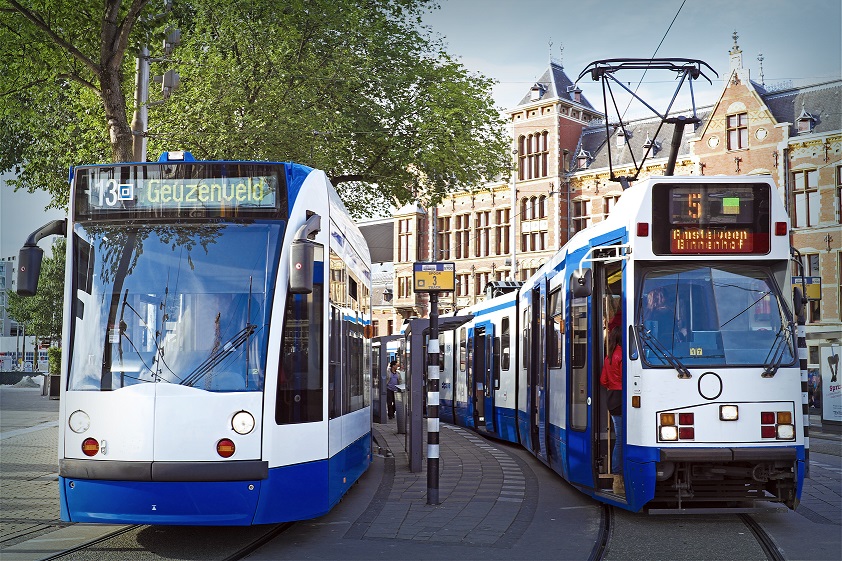
With the implementation of the Automatic Vehicle Management System (AVMS), InTraffic accommodated an important part of the functionality used by the Amsterdam city transport company, such as timetable driving, logical positioning, punctuality en route and ad hoc driving interventions. The result is a solution where one system supports bus and streetcar drivers in the execution of their ride and provides travelers with up-to-date travel information. A simplified system that is ready for current and future developments.
The challenge: parallel development
The implementation of the AVMS is not an isolated project, but must fit within GIVA (Generic ICT vehicle architecture), the international ITxPT communication standard that GVB has embraced, and the parallel development of other software. A major operation. The parties involved experience many dependencies on each other during the process. For example, the data to determine where the vehicle is, how it relates to time and the timetable that is in place must be processed and shared with other systems. This requires continuous coordination and cooperation with both GVB and other suppliers and stakeholders. Based on the common goal and by communicating openly with each other, this has succeeded.
The result: One system that informs streetcar drivers and passengers
GIVA allows all equipment on board buses and streetcars to communicate with each other and the shore through a single screen. The AVMS, which InTraffic packaged into software and added to GIVA, consists of five open standard functionalities:
- Trip selection - this functionality displays the timetable. The driver selects the trip and, after fiat from traffic control, starts driving the route.
- Logic positioning - based on GPS data, it determines where the vehicle is on the route. Business logic deals with inaccuracies in the GPS data so that positioning works stably and reliably.
- Punctuality determination - in reality, a vehicle is traveling faster or slower than the schedule. Punctuality determination establishes where the streetcar or bus actually is relative to the scheduled trip. Among other things, this enables GVB to provide up-to-date travel information.
- Riting interventions - cancelled or temporarily added stops, detour due to for example road works, an accident or event, with the functionality 'riting interventions' traffic control or the driver can change the planned route.
- Logging - insight into your data, both during and after the trip, to adjust your schedule or routes
"Through direct, transparent communication, we had good insight into scope and planning at every point in the project. Content coordination also ran smoothly through design sessions with stakeholders and cooperation with the product owner. Always on the ball and result-oriented."
- Remko Zuidgeest, Program Manager EBS Renewal GVB
Quality
Quality is a top priority at GVB. An external company (Boncode) periodically looks deeply into the code developed by InTraffic and finds a good and consistent picture: according to them, the code is tightly written, easy to maintain and of above-average quality. GVB also attaches great importance to thorough testing of functionalities. A test team from InTraffic helps them do that. The entire fleet is deployed with AVMS.
